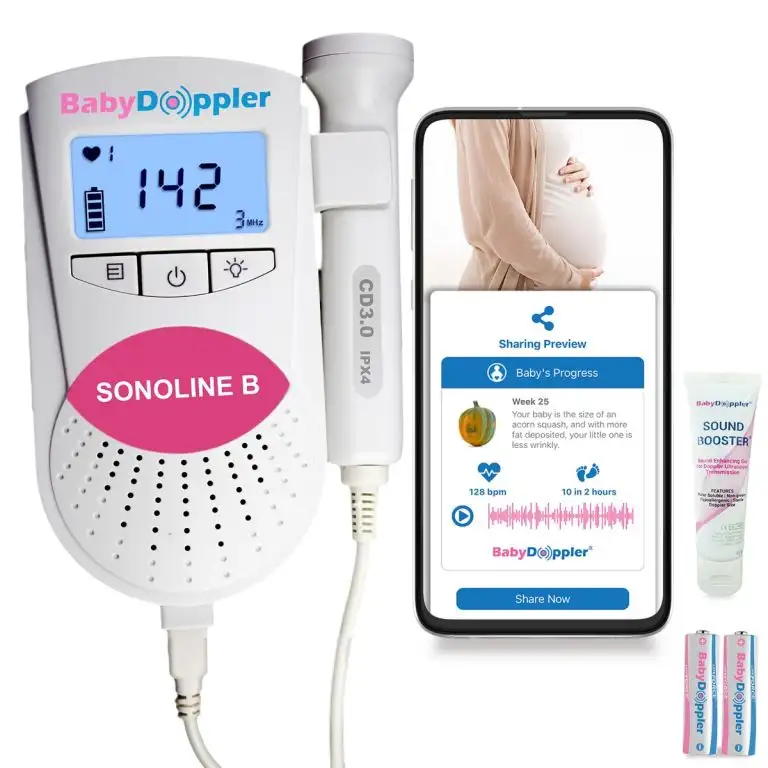
Baby Doppler: A Comprehensive Guide for Expectant Parents
Introduction
Pregnancy is an extraordinary journey filled with anticipation, excitement, and a profound connection between the mother and her unborn child. As the baby grows and develops within the womb, expectant parents eagerly seek ways to monitor their little one’s well-being and share in the miraculous experience. One such tool that has gained immense popularity in recent years is the baby Doppler.
What is a Baby Doppler?
A baby Doppler, also known as a fetal Doppler, is a handheld ultrasound device that emits high-frequency sound waves to detect the heartbeat of a developing fetus. These sound waves are reflected off the baby’s heart and returned to the Doppler, creating a distinctive sound that resembles a galloping horse.
How Does a Baby Doppler Work?
Baby Dopplers utilize the Doppler effect, a phenomenon that occurs when sound waves bounce off a moving object. As the baby’s heart contracts and relaxes, it creates vibrations that cause the sound waves to change frequency. The Doppler device detects these frequency changes and converts them into audible sounds.
Benefits of Using a Baby Doppler
-
Early Detection of Heartbeat: Baby Dopplers allow expectant parents to hear their baby’s heartbeat as early as 10-12 weeks of pregnancy, providing reassurance and a sense of connection.
-
Monitoring Fetal Well-being: Regular use of a baby Doppler can help parents monitor their baby’s heart rate and rhythm, ensuring that it is within normal ranges.
-
Reducing Anxiety: Hearing the baby’s heartbeat can alleviate anxiety and provide comfort to expectant parents, especially during the early stages of pregnancy.
-
Bonding Experience: Using a baby Doppler can foster a strong bond between parents and their unborn child, as they share in the experience of listening to the baby’s heartbeat.
Types of Baby Dopplers
There are two main types of baby Dopplers available:
-
Intermittent Dopplers: These devices are designed for occasional use and provide a snapshot of the baby’s heartbeat. They are typically less expensive and easier to use than continuous Dopplers.
-
Continuous Dopplers: These devices offer real-time monitoring of the baby’s heartbeat and can be used for extended periods. They are more expensive and require some training to use effectively.
How to Use a Baby Doppler
Using a baby Doppler is relatively straightforward, but it is important to follow the manufacturer’s instructions carefully. Here are some general steps:
-
Choose a comfortable position: Lie down or sit in a comfortable position with your abdomen exposed.
-
Apply gel: Apply a small amount of ultrasound gel to the probe of the Doppler. This will help conduct the sound waves.
-
Locate the baby’s heartbeat: Move the probe gently over your abdomen until you hear the baby’s heartbeat. It may take some time and patience to find the optimal location.
-
Listen to the heartbeat: Once you have found the baby’s heartbeat, listen to it for at least 30 seconds to ensure it is regular and within normal ranges.
Safety Considerations
Baby Dopplers are generally considered safe for occasional use during pregnancy. However, there are some safety considerations to keep in mind:
-
Avoid excessive use: Excessive use of a baby Doppler can expose the fetus to unnecessary ultrasound waves. It is recommended to limit use to no more than 10-15 minutes per day.
-
Do not use for medical diagnosis: Baby Dopplers are not intended for medical diagnosis. If you have any concerns about your baby’s well-being, consult your healthcare provider immediately.
-
Follow manufacturer’s instructions: Always follow the manufacturer’s instructions carefully to ensure safe and effective use of the baby Doppler.
When to Use a Baby Doppler
Baby Dopplers can be used throughout pregnancy, but they are most commonly used during the following periods:
-
Early pregnancy: To detect the baby’s heartbeat as early as 10-12 weeks.
-
Mid-pregnancy: To monitor the baby’s heart rate and rhythm regularly.
-
Late pregnancy: To check the baby’s heartbeat before and after labor.
Limitations of Baby Dopplers
While baby Dopplers can be a valuable tool for expectant parents, it is important to be aware of their limitations:
-
Accuracy: Baby Dopplers may not always be accurate, especially in early pregnancy.
-
User error: Incorrect use of the Doppler can lead to false readings.
-
Not a substitute for medical care: Baby Dopplers are not a substitute for regular prenatal care and should not be used to diagnose or treat any medical conditions.
Conclusion
Baby Dopplers offer expectant parents a unique opportunity to connect with their unborn child and monitor their well-being. By understanding the benefits, limitations, and safety considerations associated with baby Dopplers, expectant parents can make informed decisions about using this technology during their pregnancy. Remember, always consult your healthcare provider for any concerns or questions you may have.
